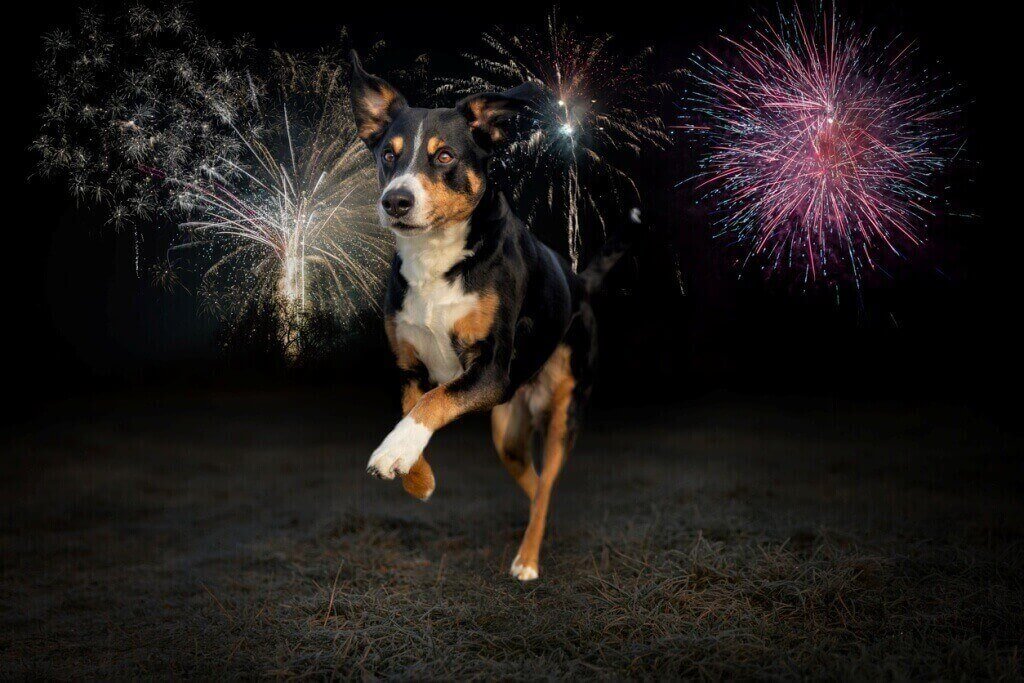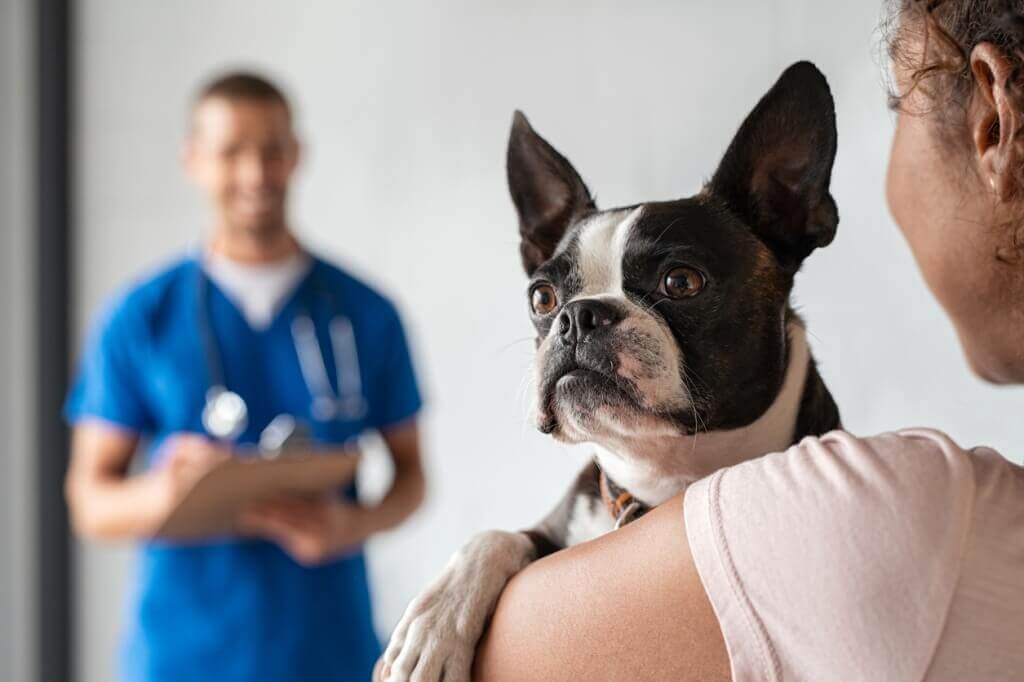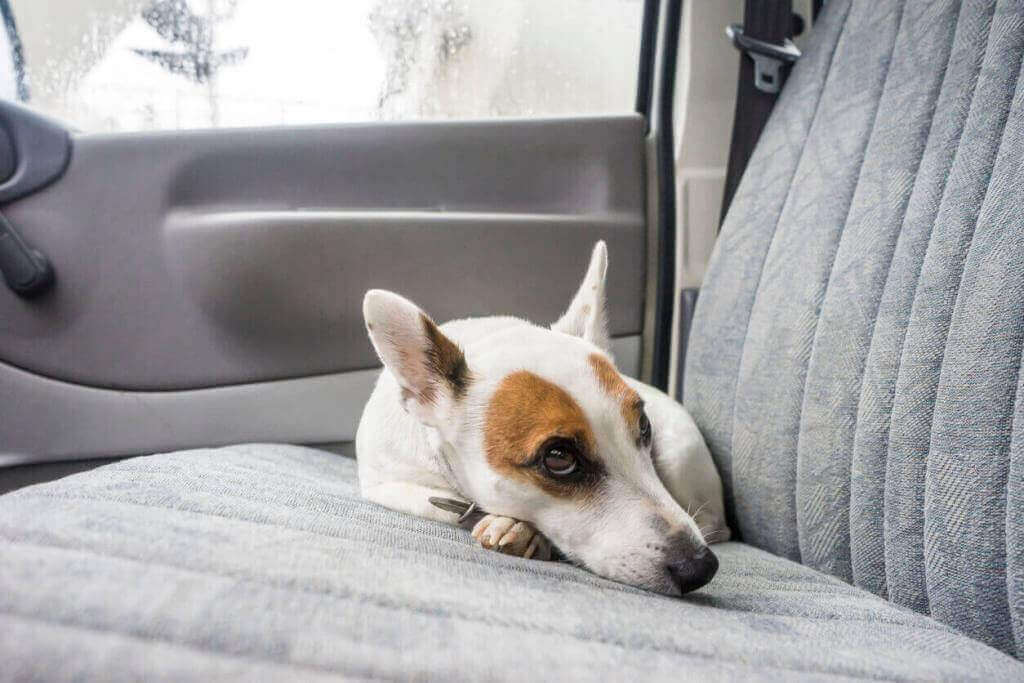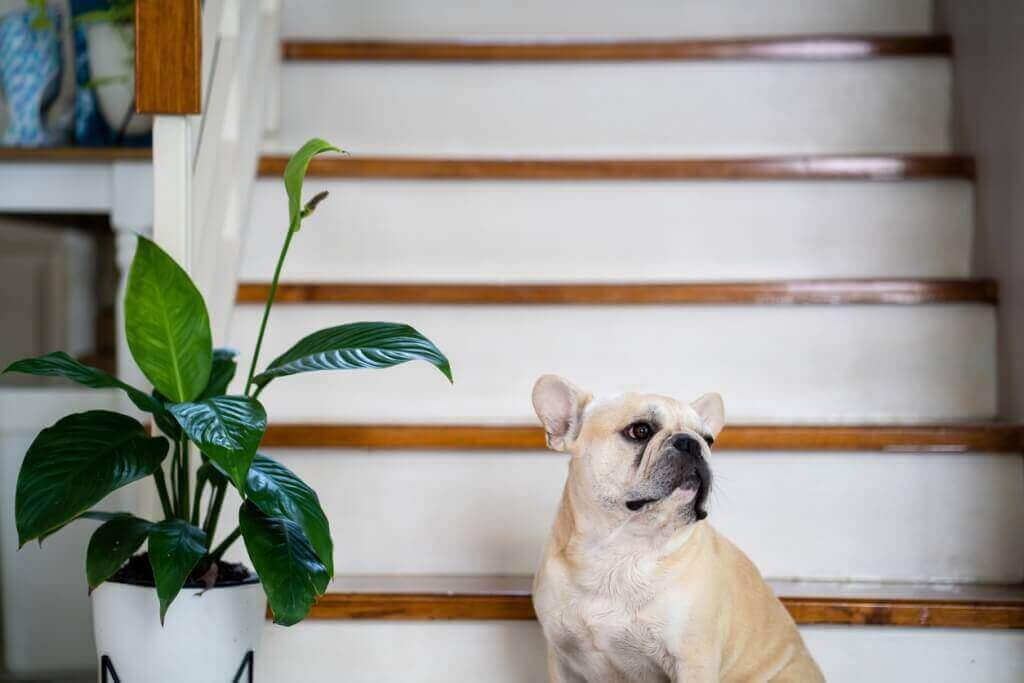What are dogs scared of? All animals are unique and can develop bad habits, including dogs. Some dog concerns make perfect sense to us, while others do not. Some of your dog’s anxieties may go unreported due to their randomness and subtlety.
If we fail to observe and understand dogs, then we will have missed something essential. Ignoring the indications that your dog is frightened could result in permanent fears and undesirable habits.
Table of Contents
ToggleCommon dog fears and why your dog is scared
Dog Phobia of Thunder

Astraphobia is the scientific term for this specific phobia. It occurs at various levels in dogs, but it is safe to say that no canine is oblivious to this atmospheric phenomenon. Some animals shiver, lower their ears, and tuck their tail behind their bodies when they hear thunder.
Other, more fearful dogs feel the urge to hide in a particular area of the home where they feel comfortable, often engaging in destructive behaviorto reduce their anxiety. Numerous canines are unable to regulate their urination and feces.
There are, however, methods for calming your dog during a thunderstorm. This may involve using natural remedies or behavioral training to manage the animal.
Dog Firecracker Phobia

Fireworks and other loud noises can be frightening for dogs since their hearing is much more sensitive than ours. Considering the light effects that precede booms and bursts, it is not unexpected that dogs develop a fear of these two things so fast. This fear can be alleviated by desensitizing our pets.
In some dogs, this fear is so intense that they’ll leave their homes searching for a place where they feel safe. Unfortunately, certain breeds are more susceptible to this type of anxiety disorder and may need intensive medical care if you don’t want your dog on prescription drugs for the rest of its life.
Dog Fear of Visiting the veterinarian

Almost all dogs are scared of visiting the vet. This relates primarily to the initial encounter with the veterinarian practice. There are strange odors, being caressed and held by strangers during an examination, receiving a vaccine, etc. Dogs remember the location where they endured a negative encounter.
Regular, unannounced visits are recommended to prevent this fear from developing or minimize anxiety associated with visits to the veterinarian. There will be no tests or interventions during these visits. It will be a simple social visit where the dog and owner will feel comfortable and “socialize” with the veterinarian.
Dog Car Travel Fear

Even though most dogs enjoy automobile rides, this anxiety is relatively frequent. Usually, it stems from a negative car-riding experience in the past. Likely, the dog will no longer like vehicle rides if he has motion sickness and nausea during the trip.
If the ride culminates in a trip to the veterinarian or abandonment, fear is more likely to grow and become more justified.
This dread of cars in dogs can be lessened and eradicated through more frequent, brief car excursions, ultimately resulting in contentment. If you take your dog for a ride to its favorite park or to see another pet, it will stop being afraid of car trips.
Dog Fear of Being Abandoned

Separation anxiety is another synonym for abandonment phobia. This happens most often when a dog is left at home alone. Typically, these dogs exhibit destructive behavior by destroying objects and biting furniture; there is frantic barking, wailing, and shrieking.
The elimination of this phobia in dogs requires time and compassion. It is important to spend the correct amount of time away from home, and it is also vital that your dog be able to entertain itself while you are gone.
It is also suggested that you take your dog on longer walks so that he becomes exhausted and falls asleep before you depart. Provide your dog with a familiar toy and space that they enjoy.
Dog Phobia of Stairs

It is not always obvious that a dog is afraid of stairs. These dogs should be treated gently, with patience and kindness, until they learn to trust the stairs again.There is a correct method for teaching a dog to use stairs.
Being a proactive owner could be a good way to deal with this issue. Step-by-step instruction is required so the dog can ascend and descend the stairs without fear.
Dog Fear of Others
Many may be surprised to learn that man’s closest friend, the dog, is terrified of humans. However, this is not uncommon. This fear is either the product of insufficient early socialization or abuse.
Some solutions to this issue include positive reinforcement and making the animal feel secure. If the fear is impossible, consult your veterinarian or an animal behaviorist.
Dog Fear of New People
Fear of strangers is similar tothe fear of people. The primary distinction is that the dog is afraid of strangers. Forcing a frightened dog to accept an unfamiliar person could make the animal violent.
Some dog breeds are not fond of children, while other dogs may develop a dread of children for various reasons. The first is the lack of early childhood exposure to children.
Second, children’s attitudes toward animals vary. They are not always cautious, pulling the animal’s ears or fur or grabbing it by the tail. Some dogs will not tolerate this behavior unless they have been trained to do so.
The dog may not necessarily intend to harm the youngster but may behave aggressively out of fear. Dog owners whose puppies exhibit fear of children should visit a dog behavior specialist.
Dog Object-Based Phobia
Some dogs are afraid of items such as vacuum cleaners, hair dryers and brooms. To prevent your dog from being frightened or hurt by these household objects, remove them from his line of sight—or confine him to a different room while you use one.
However, things become tricky when the animal refuses to approach, such as a statue you must pass on daily outings. In such circumstances, the only option is to gradually and calmly expose the dog to the source of its fear. Again, this is a sort of desensitization that does not require expert assistance.
How can you assist dogs in overcoming their phobias?
Make a safe Place
Create a secure space for your dog to retreat when she hears frightening sounds. However, this location must be safe from her perspective, not yours. Observe where she goes or tries to go when she is scared, and if possible, grant her access to that location.
Consider adding a dog door if she’s attempting to enter the house. Let her stay in your bedroom if she tries to hide under your bed.
Keep your dog busy
This strategy is most effective when your dog is starting to become apprehensive. If your pet is afraid of something, you can encourage her to participate in a different activity.
Start when she alerts you to the noise for the first time and is not yet exhibiting a great deal of scared behavior but is simply vigilant. Attempt to engage her in something she truly enjoys immediately.
Bring out the tennis ball and play retrieve (in an area where she cannot escape) or rehearse some commands she already understands.
Praise and reward your dog lavishly when she pays attention to the game or your commands, even if it is difficult for her because of any noise. Still, it may delay the onset of fearful behavior longer and longer with each repetition.
If you cannot hold her attention and she reacts fearfully, stop the process immediately. If you continue, your behavior may reinforce her threat display.
Modification of Behavior
Frequently, behavior modification strategies are effective at reducing fears and phobias. These procedures are referred to as “counterconditioning” and “desensitization.” This involves gradually exposing your dog to loud, scary noises and other frightening stimuli until the previously terrifying sounds no longer bother her.
This must be accomplished very slowly. Start by introducing her to a level of loudness that does not startle her and pairing it with something she enjoys, such as a tasty treat or a game. As you continue to give her rewards, you can gradually increase the volume.
Through this approach, she will eventually identify “positive things” with the formerly dreaded sound.
Consult Your Animal Physician
Medications may be available that help temporarily reduces your dog’s anxiety. You should only give your dog medication prescribed by a veterinarian.
Always check with your vet before giving your dog medication. Humans and animals do not respond to medicines in the same way. Therefore, a safe drug for humans could be devastating for your dog. Drug therapy, behavior modification, and other methods can help reduce fear and phobias.
Frequently Asked Questions
Storms, celebrations, and other loud sounds can significantly impact your dog. Stress and worry can build up throughout the day, reaching a peak at night when trying to put your dog to sleep.
Fireworks and thunderstorms are the most prevalent causes of noise phobia in dogs, but they can develop a dread of any sound, no matter how insignificant. Even the opening of a noisy door, the use of a fly swatter, or the activation of a fan might cause a noise-phobic dog to respond.
Anxiety in dogs is relatively prevalent and can be produced by various conditions; however, can dogs fear the dark? According to the Blue Cross, a dog’s fear of the dark is uncommon, especially given that their night vision is far more acute than ours.
Dogs are renowned as pack animals, or most of them are. Nevertheless, certain canines fear other dogs. When it comes to surviving, fear is a natural emotion. However, if your dog has no cause to be afraid of other dogs, this fear may develop into a phobia.
Conclusion
Wondering what dogs are scared of? Dogs can be afraid of new sounds, new smells and new people. On the whole, unless dogs are trained to attack, they’re only scared of strangers.
If you haven’t become aware of this already, it’s best to get your dog used to different situations while they are young, so they become accustomed to the everyday things that frighten other dogs. Give them plenty of love and affection, which will help conquer fears if your pup feels uncomfortable.

